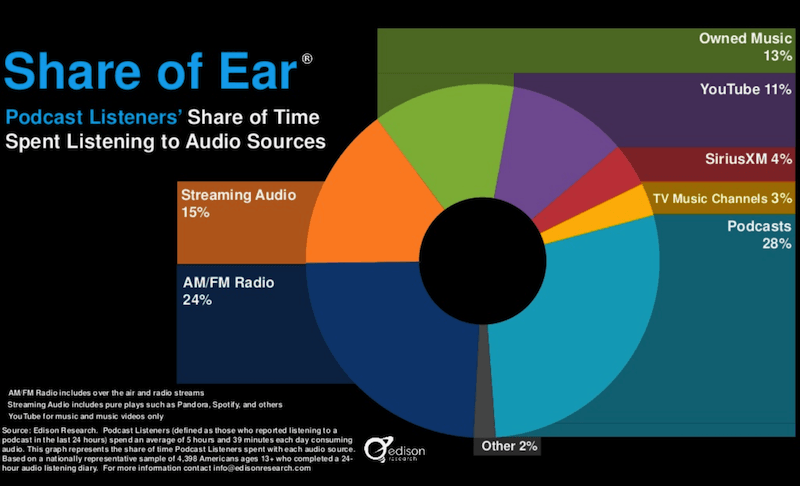How do you measure podcast audiences? The existing metrics don’t make sense. Soon we’ll be sharing some powerful thoughts and insights on why podcasting is different, and it won’t just be me talking – it will involve both actuarial and behavioural science. Before we go down another new road, and just ahead of CliffCentral.com‘s fifth birthday, I thought it might be interesting to talk about podcasting by numbers.
The latest Edison Research is a report on the PODCAST CONSUMER, which you can find in its entirety here.
The report, based on quantitative research makes for interesting reading in a media environment where the idiots keep telling us it’s unreadable and unpredictable. There are a few important findings worth thinking about, so to save you time, here is the most interesting stuff:
An estimated 144 million Americans older than 12 have listened to a podcast. In 2014, that number was only 30 million.
Men slightly outnumber women in podcasting – but it’s about 60/40 so the gap isn’t very wide. Our own research at CliffCentral and on Google Analytics bears this out locally.
Podcasting audiences are split into three major age ranges: 41% of them are 12-24 years old, 39% are 25-54 years old and the remaining 55+ age bracket account for 16-17% of podcast listeners. This is great news because the medium is young and popular with people who will convert to it and stay with it for much longer, possibly never experiencing traditional media after that.
In racial and ethnic breakdowns, the podcast audience almost exactly mirrors the racial and ethnic demographics of the USA. With our CliffCentral.com audience, it appears to reflect the same, depending on the content.
Income levels: Podcast listeners have a higher annual household income than the average numbers in the US population. Most podcast consumers have an annual household income of over $100k.
Podcast listeners tend to have degrees. The average podcast consumer has some college, a degree, or an advanced degree in terms of their level of education.
As far as employment goes, the vast majority of podcast listeners are employed full-time or part-time. Only the retired, the unemployed, and students underperform the national average.
16% of podcast listeners listen to just one podcast a week. 21% listen to four or five. 32% listen to between two and four, and a full 17% listen to more than six podcasts a week.
Most people listen at home, followed by the car, while walking, at gym, at work and while on public transport. The great thing about podcasts is they’re on your phone, so you can take them wherever you go.
58% of the people surveyed listened to a full 76-100% of the podcast. That’s a very sustained level of attention and duration. Bear in mind that there is no average podcast length. People who download a podcast usually listen to all of it.
The main reasons people listen to podcasts are: To learn new things, to be entertained, to stay up to date with the latest topics, to relax, to feel inspired, to escape and for companionship. That’s a world away from the main reason people listen to music radio – to hear their favourite songs.
People said the reasons they loved podcasts were (in order):
Because they could do other things while listening
Because they’re portable
Because they like the hosts
Because you can listen on a computer or mobile device, and
Because they make them feel smarter.
Podcasting is also growing its share of ear, or amount of time people spend listening to audio in America, at 28%. Radio only gets 24%, streaming audio 15%, music on a device 13% and YouTube 11%.
If you’re not in the podcast ecosystem then those are people you WON’T reach.
In the words of Diana Ross, “reach out and touch, somebody’s hand…” or ears. 😉


